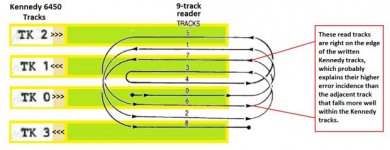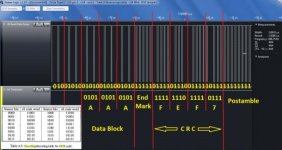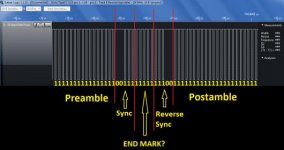firebirdta84
Experienced Member
I've mentioned in several previous threads about trying to read data written circa 1983 in 4-track format on DC300 & DC600 cartridges. I think I may have had a breakthrough here.
Piggybacking onto my QIC-24 analysis a few months back, I believe I've found a match between the Kennedy 6450 Tape Drive and the data format on these tapes, which I believe are for a Microtech Dart / M1, which I'm told is a re-branded version of a Point 4 Mark series machine of that era.
I've created a detailed page on my site for this project: http://bit.ly/1RhcdK2
I won't re-hash everything from my page here on this post, but I'll just bring over some of the key images to see if it piques anyone's interest.



I would LOVE to know if anyone here recognizes this tape format, and mostly, is it proprietary and unique to Kennedy cartridge tape drives of this era, or was it ever used elsewhere?
Does anyone have any comment on the Filemark? It's very different from the QIC-24 standard, and my examples show a minor variation from the Kennedy documentation. And my Microtech tapes have those extra "11111"s inserted between the Sync and the Reverse Sync.


Does anyone think that this is really just a documentation omission, or is this difference more significant, and maybe this is something other than a filemark?
As always, I appreciate everyone's feedback here.
-AJ
http://MicrotechM1.blogspot.com
http://MightyFrame.com
Piggybacking onto my QIC-24 analysis a few months back, I believe I've found a match between the Kennedy 6450 Tape Drive and the data format on these tapes, which I believe are for a Microtech Dart / M1, which I'm told is a re-branded version of a Point 4 Mark series machine of that era.
I've created a detailed page on my site for this project: http://bit.ly/1RhcdK2
I won't re-hash everything from my page here on this post, but I'll just bring over some of the key images to see if it piques anyone's interest.



I would LOVE to know if anyone here recognizes this tape format, and mostly, is it proprietary and unique to Kennedy cartridge tape drives of this era, or was it ever used elsewhere?
Does anyone have any comment on the Filemark? It's very different from the QIC-24 standard, and my examples show a minor variation from the Kennedy documentation. And my Microtech tapes have those extra "11111"s inserted between the Sync and the Reverse Sync.


Does anyone think that this is really just a documentation omission, or is this difference more significant, and maybe this is something other than a filemark?
As always, I appreciate everyone's feedback here.
-AJ
http://MicrotechM1.blogspot.com
http://MightyFrame.com
Last edited:
